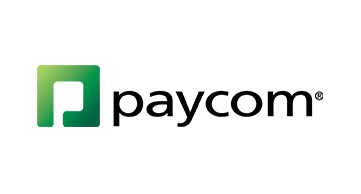The integration of interactive digital learning tools holds the key to revolutionizing education and … [+]
getty
By Breanne Pitt, PhD Candidate; Project Researcher, Strategic Intelligence, Trinity College Dublin and Abhinav Chugh, Content and Partnerships Lead, Expert Network and Content Partners, World Economic Forum
In today’s rapidly evolving world, it is increasingly clear that traditional educational models alone are no longer sufficient to meet the demands of a dynamic global society characterized by accelerating complexity. The integration of interactive digital learning tools holds the key to revolutionizing education and empowering learners of all backgrounds. We live in a time when having a systems perspective on the world around us has never been more important.
For example, taking effective action to address the challenges of climate change, biodiversity loss, energy security, and inequality requires an in-depth understanding of the patterns, relationships, interdependencies and trade-offs between them. Approaching these problems from this holistic perspective will generate the kind of sophisticated analysis and understanding that is required, especially in a world increasingly overloaded with information, both real and false.
The World Economic Forum collaborated with Trinity College Dublin to explore how we might go about embedding those necessary systems thinking mindsets into all stages of the education system. The outcome was the development of innovative and practical teaching and learning practices as well as an understanding of changing demands of learners with the onset of more intelligent information and communications systems.
The classroom of the future
Past efforts at educational reform have been largely reactive – always playing catch-up rather than being future-ready. The Fourth Industrial Revolution is only accelerating the pace of change, with the evolution of interconnected digital technologies, a skills-oriented workforce and complex value-creation systems.
The need for educational reform arises when an existing system fails to meet the changing demands of society and learners. However, so far, reforms have often tended to focus on short-term fixes rather than future-proofing the system. To create a more adaptable, flexible and innovative education system, there needs to be a shift from traditional, rigid approaches to more dynamic and responsive ones that can account for the complexities of learning, teaching and a rapidly changing world.
We envisage a classroom of the future with a variety of digital tools that can facilitate the systems thinking approach, but for the purpose of our pilot, we deployed the World Economic Forum’s Strategic Intelligence platform at a variety of education institutions globally.
Strategic Intelligence originated from the Forum’s engagement with universities, experts and thought leaders, and its commitment to addressing global challenges through multi-stakeholder collaboration. The initiative emerged from the Forum’s network of Global Agenda Councils, which brought together more than 1,000 thought leaders from academia, government, international organizations, business and civil society, grouped in expertise-based thematic councils.
To scale this engagement and provide continuous access to the collective intelligence of this broad network of contributors, a dedicated platform and methodology were developed to analyze and address the interconnected global challenges that were at the heart of this network. In the realm of education, this provided several benefits:
Embrace change and adapt to the future
The advent of digital technologies has disrupted various industries, and education is no exception. We find ourselves at a crucial juncture where we must recognize the urgency to embrace change and harness the immense potential of digital learning tools. These tools not only augment traditional pedagogical methods but also provide unparalleled opportunities for personalized learning, collaboration, and accessibility on a global scale.
Personalize learning to empower students
One of the most significant advantages of digital learning tools is their ability to personalize the learning experience for everyone. By leveraging artificial intelligence, adaptive algorithms and data analytics, these tools can tailor educational content to diverse learning styles, abilities, and pace. This customization empowers students to take ownership of their learning journey, fostering a deeper understanding and long-term retention of knowledge.
Expand access and overcome barriers
Education should be a fundamental right, accessible to all, regardless of geographical location, socioeconomic status or physical abilities. Digital learning tools like Strategic Intelligence break down the barriers of traditional classrooms, enabling students worldwide to access quality education remotely. Through online platforms, virtual classrooms and interactive multimedia resources, education becomes borderless, offering equal opportunities for learners in both urban centers and remote communities.
Foster collaboration and lifelong learning
Digital learning tools transcend the boundaries of physical classrooms, fostering collaboration among students, educators and experts from diverse backgrounds. Online forums, video conferencing and interactive learning environments facilitate peer-to-peer engagement, collective problem-solving and the exchange of ideas. Moreover, these tools encourage lifelong learning by providing access to a vast repository of knowledge, resources and interactive experiences, empowering individuals to continuously adapt and grow in an ever-changing world.
How to embed systems thinking in education
While the benefits of digital learning tools are undeniable, we must also address the challenges associated with their implementation. Quality assurance, data privacy and ensuring equitable access are critical considerations that demand continuous attention.
Collaboration between educational institutions, policy-makers and industry leaders is vital to establish robust frameworks that safeguard the integrity and efficacy of digital learning tools, ensuring they are harnessed to their full potential.
The resulting report of this exploration, Innovative Learning Solutions to Navigate Complexity: Adapting Systems Thinking to Future Classrooms, presents case studies that offer solutions for stakeholders, either as models to replicate or as inspiration to develop new approaches. Additionally, the report highlights the importance of harnessing the power of technology and encourages the use of digital systems thinking tools, such as those available through Strategic Intelligence.
Educators, learners and policy-makers should adopt a constructivist and constructionist approach to learning, which involves actively engaging with and exploring complex systems. This approach fosters curiosity, imagination and innovation, and helps to inspire a lifelong love of learning.
By implementing the strategies and recommendations provided in this report, educational reform can have a profound and influential impact on the next generation of global citizens. While not the focus of this report, it should be noted that the use of generative AI in education has the potential to both hinder and enhance the development of critical thinking, analytical, and problem-solving skills.
Based on the case studies and research presented in the report, we hope that teachers and/or learning institutions consider these recommendations:
– Build educators’ capacity in systems thinking tools and innovative lesson and curricular planning through workshops, training programs and knowledge exchange loops. These capacity-building efforts could focus on areas like using hybrid intelligence models that merge AI with human expertise.
– Develop and expand college credit or micro-credentials to train young and adult learners to understand and use systems thinking methodologies and tools for developing their skills and jobs.
– Initiate a community of practice and knowledge networks among educators and learners at the regional or city level to scale successful use cases.
– Provide media literacy training programs for educators, embed cross-curricular media literacy skills using systems thinking frameworks, and encourage a hybrid model where media literacy skills are augmented by technology rather than replaced with technology.
– Shift teaching and training from solution-led to problem-led learning methodologies to encourage critical reflection by emphasizing the need to identify underlying problems before seeking solutions. This approach leads to better decision-making, more effective resource allocation, and increased creativity and innovation.
– Adopt a dynamic approach to learning by restructuring curricula to integrate interdisciplinary projects or discussions, and offer courses that emphasize connections between disciplines instead of promoting traditional, siloed subjects.
– Place less focus on standardized testing to measure student abilities and instead develop practical assessments that measure students’ ability to apply their knowledge and skills in real-world situations through systems thinking methodologies.
– Equip learners with foresight and scenario-planning skills to explore potential career paths and identify the skills needed to succeed in those careers. This gives students the agency to plan for their futures and stay ahead of emerging trends in the job market.
Traditionally, people have turned to higher education to acquire the knowledge and skills to succeed in the world as it exists. The challenge today is that the world will exist in a radically different way tomorrow and again the day after. Therefore, educating people for reinvention in this fluid context will require the reinvention of the education system itself. Implementing the recommendations, suited, and modified per context, can reignite imagination, creativity and innovation in the classroom, making learning enjoyable and fulfilling for students.
Credit: Source link











